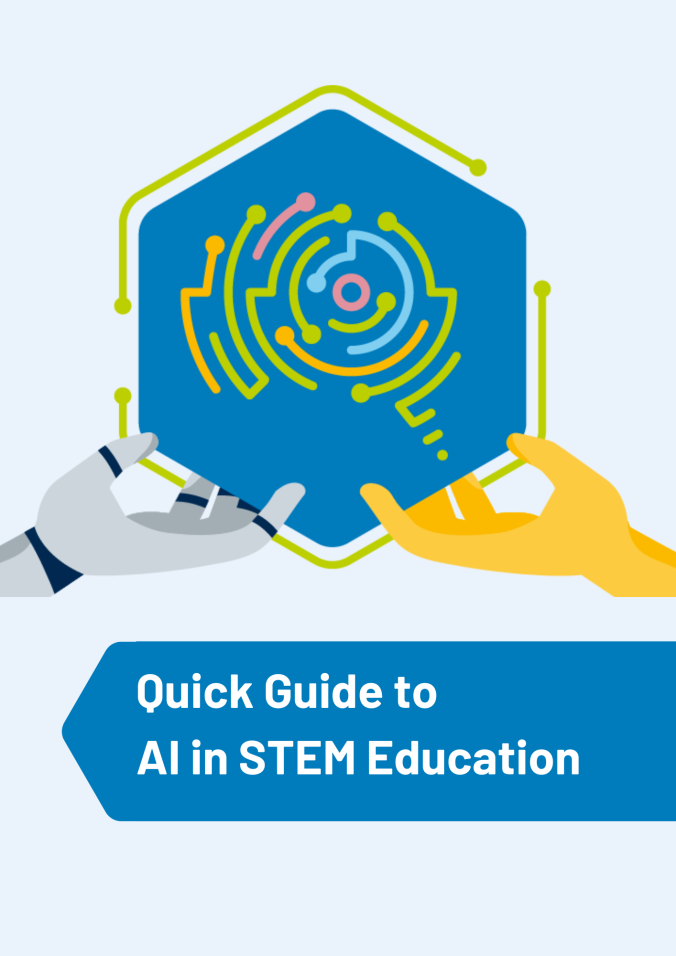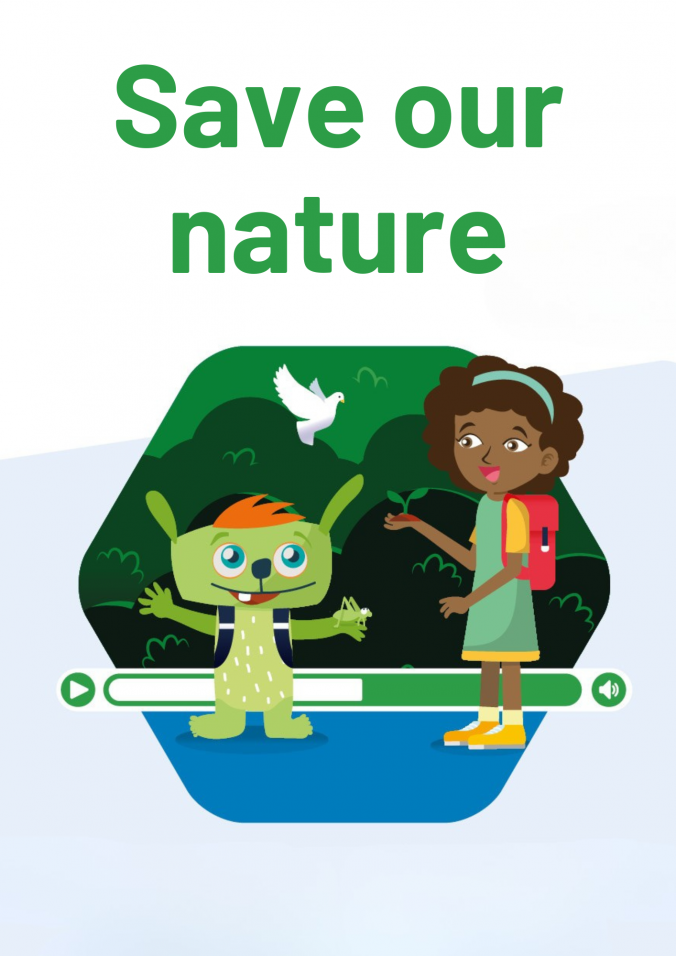The 3 Rs - Bioplastics

Overview
Overview
Keywords: bio-based products, bioplastics, biomass
Disciplines: biology, chemistry, economics
Age level of the students: primary and secondary (all units have a main lab activity for primary and one for secondary students)
Time frame: 45 - 90 minutes per activity
Partners: involvement of researchers to present a lesson for the students or visit to an industry that produces bio-based products.
![]()
![]()
![]()
Introductory activities
To introduce students to the topic of plastics and bioplastics, students can start with an interactive video about the history of plastics. Then they discover what bioplastics are and the importance of the 3 Rs. Finally, they use an article as a starting point for a discussion about the future.
Introductory activities in detail
The history of plastic - interactive video
What are bioplastics and the importance of the 3 Rs
Students learn about bioplastics and the 3 Rs through a presentation with discussion questions.
Find the presentation for students here as a pptx file and here as a pdf file.
Are bioplastics the future?
Students reflect on the question “Are bioplastics the future?” and discuss the article The future of plastic.
Students think about and discuss the importance of the 3 Rs for plastics.
Producing plastics from lactate
For primary students (8-10 years old)
In this experiment, students produce plastic from milk by simply heating milk and combining it with an acid, such as vinegar. The polymer produced can be moulded into any shape.
You can download a presentation with instructions and example images from the experiment to use in class. Please find the pptx file here and the pdf file here.
Materials
- 1 cup of milk
- 4 teaspoons of white vinegar
- a bowl
- a strainer
Procedure
- Heat up the milk until it is hot, but not boiling.
- Carefully pour the milk into the bowl.
- Add the vinegar to the milk and stir it up with a spoon for about a minute.
- Pour the milk through the strainer into the sink.
- Mould our plastic in any shape and let it dry.
Questions to ask
- What is the optimum temperature for the milk? What happens if the milk is cold?
- What happens if you put in one teaspoon of vinegar?
- Would you get the same results with low-fat milk, soy milk?
- Would other acids, such as lemon juice and orange juice work?
What is happening?
Milk contains many molecules of a protein called casein. Each casein molecule is a monomer and a chain of casein monomers is a polymer. The polymer can be scooped up and moulded, which is why plastic made from milk is called casein plastic.
How to recycle PLA
Polylactic acid (PLA) is a monomer derived from renewable, organic sources such as corn starch or sugar cane and is used today for packaging, straws, cups and bags.
PLA is one of the most popular materials used in desktop 3D printing and most extrusion-based 3D printers found in schools today use it as a filament. 3D printing produces waste. Despite the advantages, 3D printing generates large amounts of waste, which is the result of failed prints or support structures.
In this lab activity, students see how PLA can be recycled by transforming 3D printer filament scrap into a cleaning solution. It is a revised version of a Beyond Benign protocol that uses PLA cups. In Part 1, students make the solution using PLA scraps and in Part 2, they test the solution.
Materials
- 500 mL ethanol
- 500 mL distilled water
- 56 g NaOH (sodium hydroxide) pellets
- 50 mL 12 M HCl
- 50 mL distilled water
- 1000 mL Erlenmeyer flask
- 125 mL Erlenmeyer flask
- 500 mL graduated cylinder
- 50 mL graduated cylinder
- 2 magnetic stirring rods
- Stirring hot plate
- PLA scraps or a PLA cup and scissors
Procedure
Safety first: put on a lab coat, protective goggles and gloves.
First step: preparing the solutions
Prepare 1000 mL of 1.4 M NaOH in 50% ethanol in water solution:
- Measure 56 g NaOH on a scale.
- Transfer the NaOH to a 1000 mL Erlenmeyer flask.
- Add 500 mL distilled water and a magnetic stirring rod to the flask.
- Dissolve 56 grams of NaOH in water by stirring the solution using a magnetic stirrer and the stirring hot plate.
- Measure 500 mL ethanol in a 500 mL graduated cylinder.
- Slowly add 500 mL ethanol to a flask of water and allow to mix thoroughly.
- Label the solution “1.4 M NaOH in 50% ethanol in water solution”.
Prepare 100 mL 6 M HCl:
- Measure 50 mL distilled water.
- Add the water and a stirring rod to a 125 mL Erlenmeyer flask.
- Measure 50 mL 12 M HCl in a 50 mL graduated cylinder.
- Slowly add the HCl to a beaker of water
- Allow to mix thoroughly.
- Dispense the 100 mL of the solution (6 M HCl) into 10 drop-dispensing bottles.
- Label the bottles “6 M HCl”. Each bottle should contain 10 mL 6 M HCl.
Second step: Adding the PLA
- Cut the PLA cup into small pieces using scissors. The smaller the pieces are, the faster the reaction will be.
- Place the PLA pieces into a weighing boat.
- Measure 5 g of PLA pieces on a digital scale.
- Add 5 g of PLA pieces into the 250 mL Erlenmeyer flask using a funnel.
- Using the graduated cylinder, measure 100 mL of the pre-prepared solution (1.4 M NaOH in 1:1 ethanol/water).
- Add the solution and 1 magnetic stirring rod into the flask.
- Place the flask onto the hot plate.
- Turn on the heating function of the hot plate and heat the solution to 90˚C (reduce the heat if the flask begins to boil vigorously).
- Heat and stir the solution with a stirring rod until the PLA pieces have completely dissolved.
- After the PLA pieces have completely dissolved and the solution is pale yellow, turn off the hot plate. The temperature should be 80˚C – 90˚C.
- Use heat resistant gloves to remove flask from hot plate.
- Place the flask in an ice water bath and allow the solution to cool until it is below 60˚C. This mixture is now called “hydrolysed PLA”.
Third step: Finishing the cleaning solution
- Slowly add 200 drops of 6 M HCl into the flask and mix.
- Measure the final pH of the solution using a pH strip. Aim for a pH range of 4-5. The solution now contains lactic acid and sodium chloride (NaCl).
- Using a funnel, transfer the lactic acid solution into the plastic bottle. It is now ready to use.
You can download a presentation with instructions and example images from the experiment to use in class. Please find the pptx file here and the pdf file here.
After producing the cleaning solution, students can test its properties using the following procedure.
Materials
- 6 nutrient agar plates
- 6 swabs
- Distilled water
- Incubator or warm room
Procedure
- The students take samples of a surface in the lab before using their PLA cleaning solution. They take samples using the swabs and a small amount of distilled water and label the agar plates.
- The students clean the surface with their solution.
- The students take samples of the clean surface. They label their agar plate.
- They leave the samples in an incubator or in a warm room for 24 hours.
- They evaluate the samples.
Authors of The 3 Rs and the Products of the Future: Anders Florén (SE), Iro Koliakou (GR), Maria Zambrotta (IT)
Links to forward to your students
The future of plastic. Nat Commun 9, 2157 (2018).
Sculpted Science: Turn Milk into Plastic! Scientific American, Scientific American (13 Sept. 2012).
“Recycling Polylactic Acid.” Beyond Benign, 22 June 2017.
Share this page


